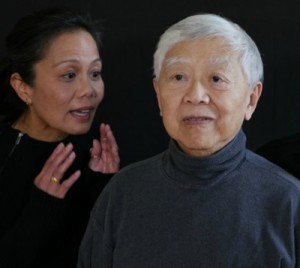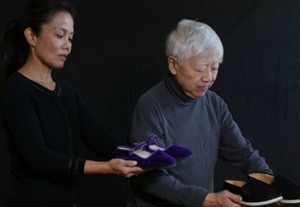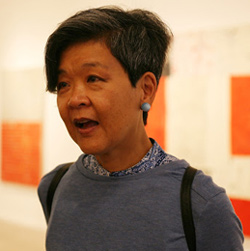“From the time of the Gold Rush through the end of the 19th century, over a quarter million Chinese came to work on the railroads, in mining, agriculture, fisheries, industries and various enterprises of the West. But there’s hardly any mention of them as individuals in America’s national narrative.”
– Rene Yung, Founder and Director, Chinese Whispers
Chinese Whispers, a nonprofit organization dedicated to uncovering the forgotten history of the Chinese pioneers who helped build the American West, will present the world premiere of Golden Gate, a multimedia theater work that brings to light little known stories of the Chinese who settled in the Bay Area, past and present.
Golden Gate runs Friday to Sunday, March 18 – 20, at the Southside Theater at the Fort Mason Center for Arts and Culture. Tickets, $20 – $25, are available for purchase online at fortmason.org/event/chinese-whispers-golden-gate.
Golden Gate weaves a tapestry of voices rarely heard in the recounting of Bay Area history. Since 2006 Yung and a team of artists and historians have traveled Northern California from the Sierra Nevada foothills to the San Francisco Bay, conducting interviews and collecting them into oral histories that form the heart of the work of Chinese Whispers. Yung has also led a research tour of the Bay aboard a replica 19th-century Chinese shrimp junk, she’s mounted a multimedia art installation at the San Francisco Maritime National Historical Park, presented storytelling events on historic sea vessels at Fisherman’s Wharf, and convened public panels at the Richmond Craneway Pavilion and the EcoCenter at Heron’s Head Park in Bayview Hunters Point.
In addition, Yung has conducted storytelling workshops at the Chinatown YMCA. Golden Gate culminates these efforts, synthesizing the material into an evening-length performance with nine storytellers, ranging in age from 25 to 84, new immigrants together with fourth-generation Chinese Americans.
Golden Gate includes an original soundscape by Jeremiah Moore and lighting and projection design by Stephanie Anne Johnson. Yung herself wrote the script weaving the stories together. “My aim has been to create a ritualized space to honor the past,” said Yung, “to invoke the spirit of the ancestors who paved the way, and to honor the spirit of the immigrants who continue that journey today.”
“Golden Gate bridges languages and generations by bringing together Chinese American community elders and bilingual youth,” continues Yung. “The story of Golden Gate, while organized around the story of the Chinese immigrant experience, is ultimately the story of the American experience, as generations of immigrants have struggled to find belonging.”
Chinese Whispers is a San Francisco-based nonprofit that uses a multi-platform program of research, storytelling, artistic productions and public programs to uncover and give voice and visibility to the overlooked contributions and experiences of the early Chinese immigrants in the making of the American West. Founded in 2006 by artist Rene Yung, Chinese Whispers has launched numerous projects including Bay Chronicles, retracing the forgotten history of Chinese shrimp fishing around the San Francisco Bay through a research expedition and a multimedia art installation; programs including place-based storytelling events about the Chinese immigrant experience; and cross-cultural, cross-generational storytelling workshops. For more information about Chinese Whispers visit chinese-whispers.org.
Rene Yung is an internationally exhibiting artist, designer, writer and cultural activist. Combining the poetic and the incisive, her work connects community, culture, history, and place, to articulate the hidden and the overlooked. A first-generation immigrant from Hong Kong, Yung has exhibited at the 46th Venice Biennale; the Contemporary Art Museum, Houston, Texas; Yerba Buena Center for the Arts, San Francisco; and the San Jose Museum of Art. She collaborated with the Stanford Archaeology Center on City Beneath the City, a series of art installations featuring artifacts excavated from the former Market Street Chinatown in San Jose.



